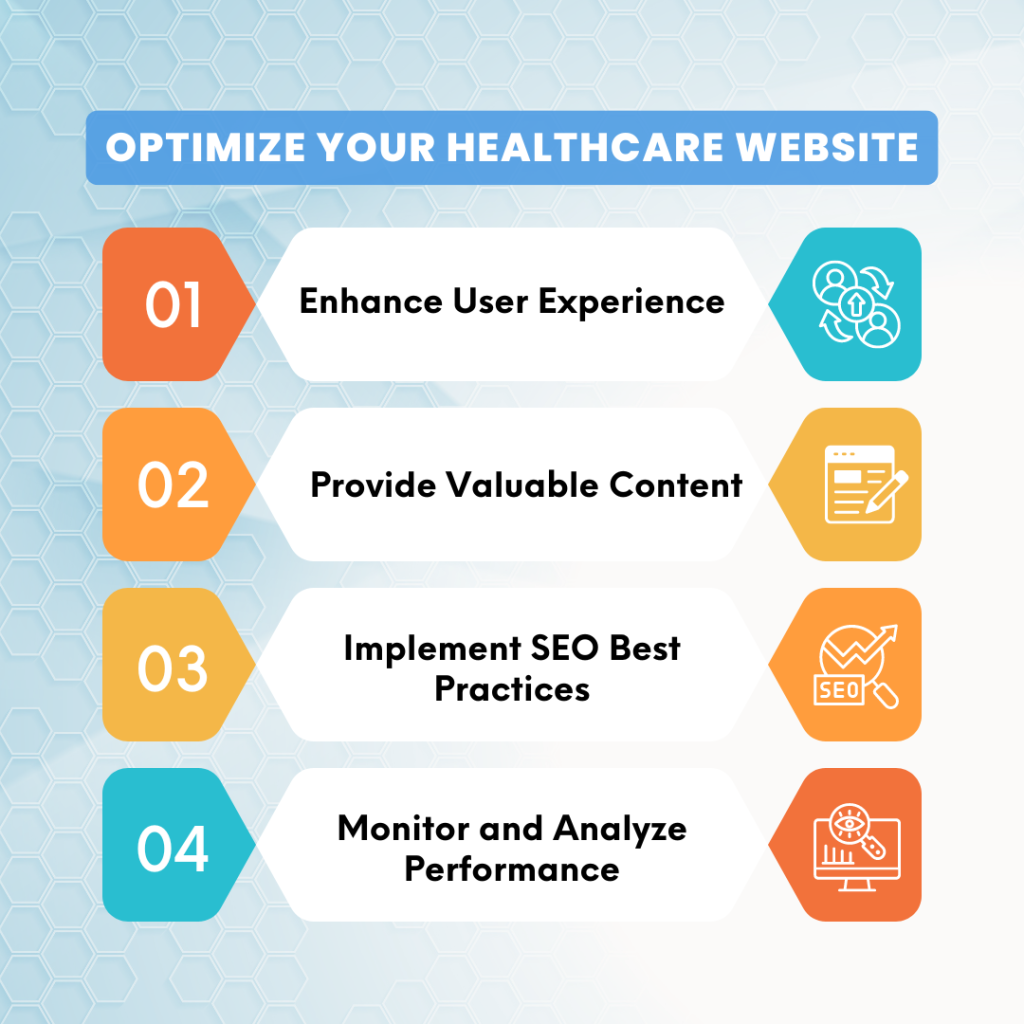
A high-quality healthcare website is essential for boosting patient engagement and driving practice growth. For doctors, clinics, and healthcare organizations, having a well-designed medical website is not just beneficial but critical.
This blog delves into the key elements that define an exceptional medical website design and offers actionable strategies for developing a superior online presence in the healthcare sector.
Explore the essential components of a top-notch medical website design and learn how to implement best practices to ensure your website effectively serves both your patients and your practice’s goals.
What is a Healthcare Website Design?
A healthcare website design is tailored specifically for healthcare providers, encompassing visual aesthetics, user experience (UX), and functionality.
A successful medical website design should be both visually appealing and highly functional, providing a seamless experience for patients and healthcare professionals alike.
Strategies for Website Visual and UX Design

-
- Prioritize User Experience (UX)
Your website design for healthcare must offer an intuitive navigation experience. Users should be able to find essential information, such as appointment scheduling and contact details, with ease.Additionally, ensure that your medical site design is mobile-responsive, as many users access healthcare sites from their smartphones. A responsive design guarantees a smooth user experience across all devices.
- Prioritize User Experience (UX)
-
- Focus on Visual Design
Opt for a clean and professional layout to avoid overwhelming users. A well-organized medical website design that uses whitespace effectively enhances readability and highlights key content.Consistent branding—through colors, fonts, and imagery—helps build trust and recognition among your patients.
- Focus on Visual Design
-
- Incorporate Accessibility Features
Make sure your website design for healthcare includes features that improve accessibility. Use legible fonts and high-contrast text to accommodate users with visual impairments.Additionally, include descriptive alt text for images to ensure that visually impaired users can understand the content through screen readers.
- Incorporate Accessibility Features
-
- Implement Interactive Elements
Interactive features such as an appointment scheduling system can greatly enhance patient convenience.Including a live chat option provides real-time support, addressing patient queries promptly and improving their overall experience.
- Implement Interactive Elements
-
- Ensure Compliance with Regulations
Your medical website design must adhere to HIPAA regulations to ensure the privacy and security of patient information.Implement SSL certificates and other security measures to protect data and build trust with your users.
- Ensure Compliance with Regulations
Considerations and Step-by-Step Guide for Implementation
-
- Define Your Goals
Identify the primary objectives of your website. Determine whether you want to attract new patients, provide valuable information, or streamline appointment scheduling.
- Define Your Goals
-
- Plan Your Content
Develop a content strategy that includes essential pages such as About Us, Services, Blog, and Contact. Ensure that your content is clear, concise, and optimized for search engines.
- Plan Your Content
-
- Choose the Right Platform
Select a website platform that aligns with your needs. Options like WordPress or specialized healthcare website builders offer both flexibility and ease of use.
- Choose the Right Platform
-
- Design and Develop
Collaborate with a web designer who specializes in medical website design to create a visually appealing and functional site. Ensure the design aligns with your brand and meets user needs.
- Design and Develop
-
- Test and Launch
Before launching, thoroughly test your website across different devices and browsers. Gather feedback from a test group to make necessary adjustments.
- Test and Launch
-
- Monitor and Update
After launch, regularly monitor your website’s performance. Keep your content fresh and relevant to maintain user engagement and optimize search engine rankings.
- Monitor and Update
Optimize Your Healthcare Website

-
- Enhance User Experience
Ensure your website is user-friendly with a clean, intuitive design that works seamlessly on both desktops and mobile devices. Simplify navigation to help users find information quickly and efficiently.
- Enhance User Experience
-
- Provide Valuable Content
Offer informative articles, patient testimonials, and clear descriptions of your services. This not only builds trust with visitors but also educates them about your offerings and expertise.
- Provide Valuable Content
-
- Implement SEO Best Practices
Improve your website’s visibility in search results by using relevant keywords, optimizing meta tags, and ensuring fast loading times. Effective SEO strategies will drive more organic traffic to your medical site design.
- Implement SEO Best Practices
-
- Monitor and Analyze Performance
Use analytics tools to track your website’s performance, understand user behavior, and identify areas for improvement. Regular analysis helps in making data-driven decisions to enhance your website’s effectiveness.
- Monitor and Analyze Performance
In summary, a well-designed medical website combines visual appeal with functionality to provide an exceptional user experience.
By focusing on UX, visual design, accessibility, compliance, and optimization, you can create a healthcare website that stands out and effectively serves its audience.
For an outstanding medical website design, strategic website development for doctors is crucial to achieving these goals.


